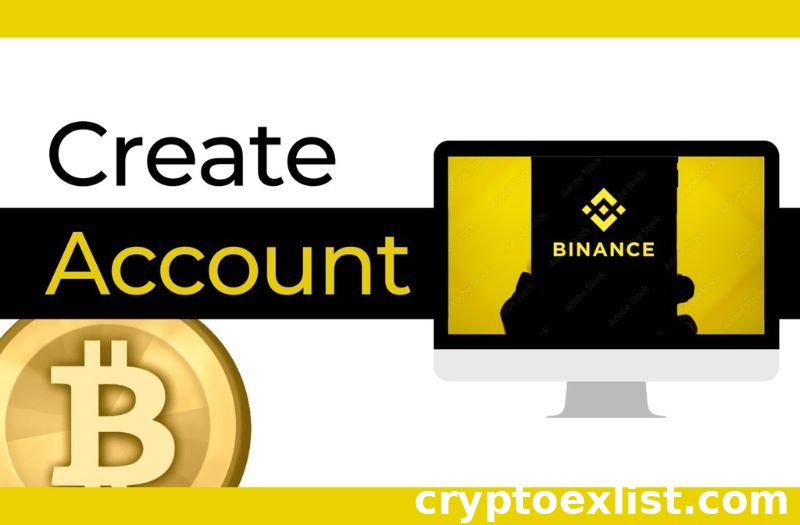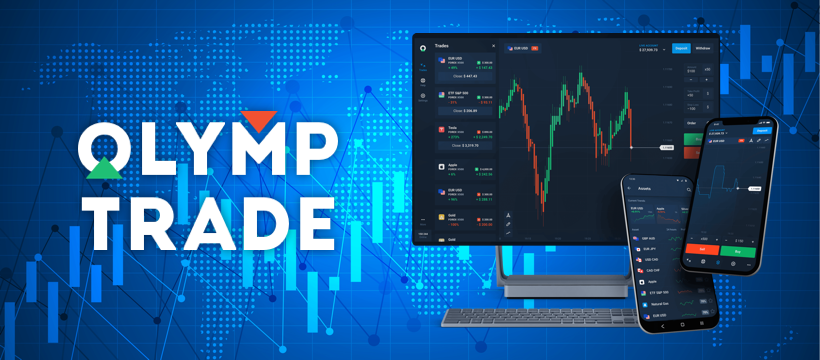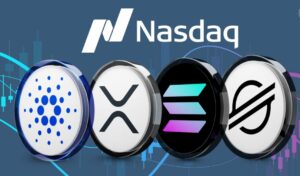
If you’re new to cryptocurrency trading and eager to explore margin trading, Binance is one of the most user-friendly and robust platforms to start with. Offering a seamless experience, Binance allows traders to leverage funds and amplify their trades, making it a powerful tool for both beginners and experienced traders. In this step-by-step guide, we’ll walk you through everything you need to know about margin trading on Binance, from setting up your account and funding it, to borrowing funds, placing your first trade, and learning from the experiences of other users. Whether you’re looking to maximize your profits or simply explore new strategies, this guide will equip you with the knowledge and confidence to get started with Binance margin trading.
Setting Up Your Binance Account
Before diving into margin trading on Binance, you’ll need a secure and verified Binance account. Here’s how to set one up.
Creating an Account on Binance
Begin by visiting the Binance website or downloading the mobile app. Look for the “Register” button and click on it. You’ll be asked to provide basic information such as your email and a strong password. Make sure the password includes letters, numbers, and symbols to maximize security. After submitting your details, you’ll receive a verification email. Click the link to confirm, and your Binance account will be created. It’s that simple!
Verifying Your Identity
Once your account is set up, the next step is to verify your identity to access Binance’s full range of features, including margin trading. This process, known as Know Your Customer (KYC), involves uploading a government-issued ID (like a passport or driver’s license) and a selfie for additional verification. Completing KYC is vital for security and will remove any restrictions on withdrawals or trading limits.
Enabling Two-Factor Authentication
Security is paramount when trading cryptocurrency, and enabling Two-Factor Authentication (2FA) is one of the easiest ways to add an extra layer of protection. With 2FA, you’ll need to provide a secondary code, typically from Google Authenticator or sent by SMS, every time you log in or make significant account changes. This ensures that even if someone gets your password, they won’t be able to access your account without your 2FA code.

Funding Your Binance Account
Before you can start trading on Binance, it’s essential to fund your account with the assets you plan to trade. Whether you’re using traditional currencies or cryptocurrencies, Binance makes the process simple. Here’s everything you need to know about depositing funds and getting ready for margin trading.
How to Deposit Funds
Depositing funds into your Binance account is an easy process. First, log in to your account and navigate to the “Wallet” section. From there, select “Deposit.” Depending on whether you’re depositing fiat currency (like USD or EUR) or cryptocurrency, you’ll be given different options. For fiat deposits, you can use methods like bank transfers or debit/credit cards. For cryptocurrency deposits, simply choose the coin you wish to deposit, copy the wallet address provided, and send your crypto from your external wallet. Always double-check the deposit address to avoid any mistakes.
Supported Cryptocurrencies for Margin Trading
When it comes to margin trading, not all cryptocurrencies are available for trading with borrowed funds. Binance supports a wide range of cryptocurrencies for margin trading, including popular ones like Bitcoin (BTC), Ethereum (ETH), and Binance Coin (BNB). These coins are typically paired with stablecoins like USDT or BUSD for trading, ensuring liquidity and minimizing volatility. Be sure to check the full list of supported cryptocurrencies on Binance’s margin trading platform, as it is regularly updated.
Understanding Fees Associated with Deposits
Depositing funds on Binance usually comes with low fees, but it’s important to understand what costs you might incur. For fiat currency deposits, fees vary depending on the deposit method and the currency. Bank transfers are often the cheapest option, while credit card deposits may come with higher fees. For cryptocurrency deposits, Binance generally does not charge a deposit fee, though you may incur network fees depending on the blockchain you’re using. It’s always a good idea to review the fee structure before making any deposits to avoid surprises.

Navigating to the Margin Trading Section
If you’re new to Binance and eager to dive into margin trading, the platform makes it incredibly easy to get started. Binance is known for its user-friendly interface, and finding your way to the margin trading section is no exception. For beginners, margin trading allows you to borrow funds to amplify your trades, which can potentially increase your profits (but also your risks!). Follow this simple guide to access and understand the margin trading feature on Binance.
Accessing the Margin Trading Interface
To access Binance’s margin trading interface, first, log into your Binance account. Once you’re on the homepage, hover over the “Trade” tab at the top of the screen. In the dropdown menu, you’ll notice different trading options like “Classic,” “Advanced,” and “Margin.” Click on “Margin,” and this will redirect you to the margin trading platform. If it’s your first time using margin trading, Binance will require you to complete a quick quiz about the risks involved before granting access. This feature ensures that you understand the dynamics and risks associated with margin trading.
Understanding the Margin Trading Dashboard
The margin trading dashboard on Binance may seem a bit overwhelming at first, but once you familiarize yourself with the layout, it becomes straightforward. The dashboard includes a real-time chart of your selected trading pair, an order book, and a list of all your active positions. You’ll also find essential information like your available margin balance and current debt, which helps you keep track of how much you’re borrowing and how much collateral you’ve put down. Another important feature is the “Risk Level” indicator, which tells you how close your account is to liquidation—if your margin level drops too low, Binance will automatically close your positions to prevent further losses.
Selecting a Trading Pair
One of the key decisions you’ll make in margin trading is selecting the right trading pair. On Binance, you have access to a wide range of cryptocurrencies that can be traded on margin. To choose a trading pair, navigate to the search bar in the margin trading section. You can either search directly for the pair you’re interested in (e.g., BTC/USDT) or browse through the list of available pairs. Binance color-codes margin trading pairs, so you’ll easily distinguish which ones are available for cross-margin or isolated margin trading. Once you’ve selected your pair, the real-time chart and data will update to reflect the performance of that pair, allowing you to make informed trading decisions.
Borrowing Funds for Margin Trading
If you’re ready to take your trading to the next level, borrowing funds for margin trading on Binance can be a game-changer. This feature allows you to borrow cryptocurrency and potentially increase your buying power, enabling you to take larger positions in the market. However, it’s important to understand how the borrowing process works and the associated costs to make informed decisions. Below, we’ll walk you through how to borrow cryptocurrency, how interest rates work, and what loan limits you should be aware of when using margin trading on Binance.
How to Borrow Cryptocurrency
Borrowing cryptocurrency on Binance for margin trading is a straightforward process. Once you’ve entered the margin trading interface, you’ll see an option to “Borrow” next to your available balance for each trading pair. Simply select the trading pair you’re interested in, and Binance will display how much you can borrow based on your available collateral. This collateral comes from the assets in your margin account, and you can borrow up to a certain ratio of those holdings. After confirming the amount you’d like to borrow, the funds are instantly credited to your account, allowing you to place trades with a larger amount than you currently hold.
Understanding Interest Rates on Borrowed Funds
One of the critical aspects of margin trading is understanding the interest rates on the borrowed funds. When you borrow cryptocurrency from Binance, you’re essentially taking out a loan, and like any loan, there’s an interest fee associated with it. Binance calculates interest rates based on the specific cryptocurrency you borrow, and the rates are updated hourly. The interest is automatically deducted from your margin account balance, and you can monitor the accrued interest in real time from the dashboard. It’s crucial to keep track of these rates because if your interest fees pile up, it can eat into your potential profits. Always ensure that you’re aware of the cost before making larger trades.
Loan Limits and Requirements
Binance sets specific loan limits and requirements to ensure that users are trading responsibly. The amount you can borrow for margin trading depends on the assets in your margin account. Binance uses a ratio called the Loan-to-Value (LTV) ratio, which determines the maximum amount you can borrow based on the value of your collateral. For example, with an LTV ratio of 65%, if you have $1,000 in collateral, you can borrow up to $650. It’s also important to note that there are both cross-margin and isolated margin modes. Cross-margin allows you to use your entire margin account as collateral, while isolated margin limits the collateral to a specific trading pair, giving you more control over your risk exposure. Always review these limits and choose the mode that best fits your trading strategy.

Making Your First Margin Trade
Embarking on your first margin trade on Binance is an exciting step, but it’s essential to approach it with a solid strategy and a clear understanding of how the process works. Margin trading allows you to borrow funds to increase your buying power, which can amplify both profits and risks. Before diving into your first trade, let’s break down how to choose a strategy, place a margin order, and monitor your trade’s progress to ensure you stay on top of market movements.
Choosing the Right Strategy
The key to successful margin trading is having a strategy in place before you start. Unlike regular spot trading, margin trading involves borrowing funds, which means there’s more at stake. Some common strategies for margin trading include longing and shorting. When you “go long,” you’re betting that the price of the asset will rise, while “shorting” means you expect the price to fall. For beginners, it’s wise to start with small positions and take the time to analyze market trends, price charts, and other indicators before placing your trade. Having a well-defined plan helps you navigate the ups and downs of the market and avoid emotional decisions.
Placing a Margin Order
Once you’ve settled on your strategy, placing a margin order on Binance is simple. Head over to the margin trading interface, choose your preferred trading pair, and then select either a buy (long) or sell (short) option, depending on your strategy. You can choose between a variety of order types, such as a market order, which executes instantly at the current price, or a limit order, which only executes when the price reaches a level you’ve set. After placing your order, Binance will automatically deduct the borrowed amount from your margin balance and apply it to your trade. Remember to keep an eye on your leverage settings—while higher leverage can boost potential profits, it also increases risk.
Monitoring Your Trade Progress
Once your trade is live, it’s crucial to keep an eye on its progress. Binance offers various tools within the margin trading dashboard to help you track your trade’s performance in real time. You can monitor important metrics such as your unrealized profits and losses, your risk level (which indicates how close you are to liquidation), and your interest on borrowed funds. If the market moves against your position and your risk level becomes too high, you may need to add more collateral to prevent liquidation. Staying vigilant and regularly reviewing your trades ensures that you can make informed decisions about when to exit or adjust your position. This constant monitoring is key to maintaining a successful margin trading strategy.
Reviews and Feedback from Users About Margin Trading
Binance margin trading has attracted a wide variety of feedback from users, particularly those looking to enhance their trading potential by leveraging borrowed funds. For many traders, margin trading is a powerful tool to amplify their profits, but it comes with an increased level of risk. As a long-time Binance user, I’ve seen both the positive and challenging aspects of this feature. From practical experiences to common mistakes, understanding how other users have navigated Binance’s margin trading can offer valuable insights for newbies looking to start their own journey.
Practical Experience
Many users appreciate Binance’s margin trading for its ease of access and robust interface. One of the standout features often praised is the platform’s clear layout, which helps even beginners understand the borrowing and trading process. The real-time data, such as risk level and borrowing limits, allows traders to stay on top of their positions with minimal confusion. Additionally, traders highlight the benefit of having both cross-margin and isolated-margin options, offering flexibility depending on their risk tolerance. Binance’s ability to support a wide variety of trading pairs and offer competitive interest rates is another aspect frequently mentioned in user reviews. Overall, traders with practical experience have found the platform to be intuitive, reliable, and a great fit for both short-term and long-term strategies.
Common Errors
Despite the positive experiences, there are common errors that many users—especially beginners—tend to make when using Binance margin trading. One of the most frequent mistakes is underestimating the risks associated with leverage. Some users borrow too much without fully understanding the implications of market volatility, which can quickly lead to liquidation if the market moves unfavorably. Another common issue arises from neglecting to monitor the interest rates on borrowed funds. While Binance’s rates are competitive, failing to track accumulating interest can slowly erode profits, especially for traders holding positions for extended periods. Additionally, users often make errors in maintaining sufficient collateral, leading to margin calls or forced liquidations when their risk level exceeds Binance’s thresholds. These mistakes can be avoided with a bit more care, regular monitoring of the margin dashboard, and understanding the platform’s tools designed to help manage risk.
Conclusion
Margin trading on Binance opens up exciting opportunities to enhance your trading potential, but it’s crucial to approach it with a solid understanding of the platform and the risks involved. From creating your account and navigating the margin trading interface to borrowing funds and placing your first trade, this guide covers all the essential steps to help you trade with confidence. Always remember to do your research, choose the right strategy, and learn from the feedback of others to avoid common pitfalls. As you gain experience and become more comfortable with margin trading, Binance offers the tools and features to help you refine your skills and grow as a trader. Ready to dive into the world of margin trading? Start your journey with Binance today!























